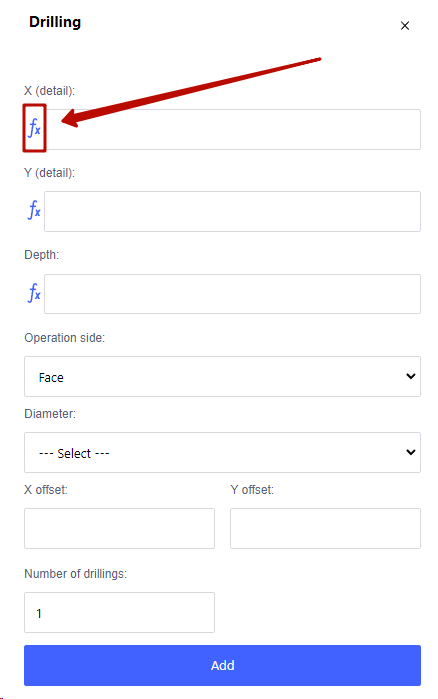Data parametricity
If there is a sign next to the input field

This means that when you enter a value in a field, you can enter variables. For example: x1-50. The system uses a value equal to the length of the part in the overall dimension minus 50 mm.
Variables that can be used in the calculation:
• x - dimension of the part along the X axis according to the saw (before joining and edging) size
• x1 – detail dimension along the X axis according to the overall (after edging) size
• y – detail dimension along the Y axis according to the saw (before joining and edging) size
• y1 – overall dimension of the part along the Y axis according to the overall (after edging) size
• z - dimension of the part along the Z axis
• detail.b_band_thikness – thickness of the bottom edge of the part
• detail.l_band_thikness – thickness of the left edge of the part
• detail.r_band_thikness – thickness of the right edge of the part
• detail.t_band_thikness – thickness of the top edge of the part
• detail.b_band_pre_joint – prejoint thickness for the bottom edge of the part
• detail.l_band_pre_joint – prejoint thickness for the left edge of the part
• detail.r_band_pre_joint – prejoint thickness for the right edge of the part
• detail.t_band_pre_joint – prejoint thickness for the top edge of the part
• detail.small_side – overall length of the shorter side of the part. If the sides are equal, then the length of the side is X.
• detail.big_side -- overall length of the longer side of the part. If the sides are equal, then the length of the side is X.
-
You can also use company parameters.
-
-
Example:
-
-
• production.length_to_groove – in the administrative part there are parameters of the manufacturer. Any of these parameters can be referenced.
When building templates, you can also refer to template variables.